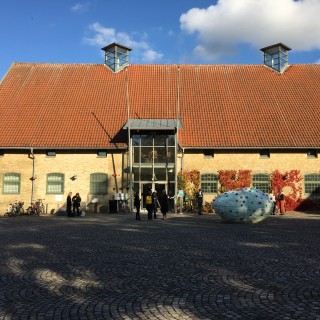
Countesswells: a Scottish landscape urbanism?
- Other / Masterplanning Written by Christopher GrayIn October 2016, Chris Gray was invited to present at a conference called “Beyond ism: the landscape of landscape urbanism” which was hosted at The Swedish University of Agricultural Sciences, SLU, Campus Alnarp, Malmo, Sweden. The aim of the conference was to reposition the relationships between city and landscape, as reflected in the practice and academia of various disciplines. This involved a revisiting of the academic discourse concerning Landscape Urbanism, engagement with subsequent ‘isms’ as well as looking beyond at live projects, in order to enrich and broaden the urban discourse. Chris presented a paper called “Countesswells: a Scottish landscape urbanism?” which looked at OPEN’s long running project at Countesswells, Aberdeen from the perspective of the theories of Landscape Urbanism. Chris’ abstract can be read below alongside some of photos from the conference proceedings.
Countesswells: a Scottish landscape urbanism?
As a reflective practitioner with qualifications in architecture and landscape architecture, I have an interest in a hybrid practice that might cross both disciplines. The potential for landscape urbanism as such a hybrid approach has interested me from the outset; my academic publications have focused on what is actually meant by the term “landscape urbanism” and my professional career has been predominantly directed towards large scale masterplanning and infrastructure projects where landscape offers the opportunity to drive urban systems and in doing so, shape whole new places.
In the murky realities of practice, where construction is difficult and subject to a myriad different pressures and tensions, a project led by our practice that has most recently tangled with some of processes and abstractions of landscape urbanism is the new settlement of Countesswells, on the edge of Aberdeen in north-east Scotland. The project has advanced during a fascinating period in both local and global terms: conceived through early visionary land acquisitions made before there was any indication that Aberdeen would become the oil capital of Europe; most recently crystallised as a viable proposition during the global downturn; and established in policy amid debate over Scottish independence. Through this long gestation, the project has matured, weathering several of the counter-cyclical economic antics of the oil industry in Aberdeen along the way. The first phase of what will be a new settlement of 3,000 homes and all the services required by such a population are currently emerging from the ground.
Whilst the site doesn’t offer some of the more gritty challenges of remediation and regeneration to be found in other landscape and infrastructure driven projects, it has had to establish a clear approach which sensitively and carefully embeds the new settlement into the landscape. Although not set within an existing urban condition, the approach had to consider infrastructure, water management, biodiversity, and human activity; landscape urbanism (under some definition or other!) would seem a good ethos to adopt, being an lens that asks and examines the implications of the city in the landscape and landscape in the city.
The project will be presented in order for the audience to draw their own conclusions regarding the use of this lens. Details of the infrastructure approach at Countesswells focus necessarily on water, soil and ecology amongst other factors. The presentation of this project allows for the posing of several questions which are pertinent to the conference and the theme: Can this be considered landscape urbanism? Would other proponents of the term recognise some of the more mundane practicalities of the approach taken to infrastructure, natural systems and landscape as being compatible with landscape urbanism theory? Why is there unease among landscape architects regarding the term landscape urbanist?
